
15 Best Toys for Building Independence — That Aren’t Boring or Overhyped
From magnetic tiles to dolls and pretend kitchens, these 15 toddler toys are actually worth the shelf space — and designed to encourage solo play and confidence.
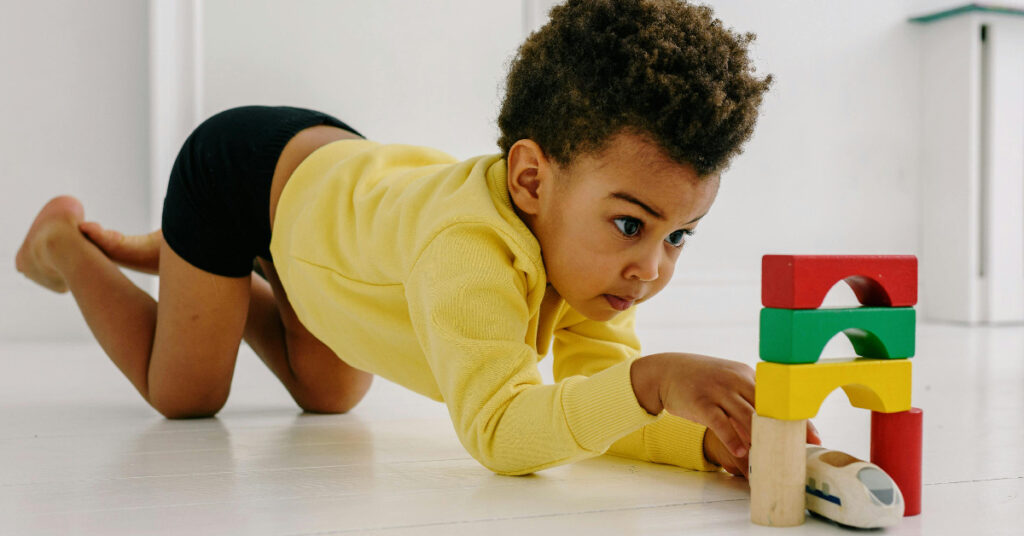
You’ve probably heard that toddlers should play independently. But what does that actually mean at 1… or 3… or 5?
Is independent play supposed to be quiet? What independent play by age can I expect? Is it okay if they narrate every moment while you’re hiding in the pantry with a snack? Should you be able to leave the room without a stage-five clinger meltdown?
If you’ve asked any of these questions — you’re in the right place.
This is your no-fluff, no-pressure guide to understanding independent play by age. Because here’s the truth: what independent play looks like changes massively from year to year. A one-year-old stacking blocks for two minutes is a big deal. A five-year-old running an imaginary vet clinic solo for 40 minutes? Also a big deal — just different.
In this blog, we’ll break down:
What independent play by age really looks like (without the mum guilt)
What’s developmentally realistic at 1, 2, 3, 4 and 5
How to gently encourage more solo play — even if your child is glued to your leg
Real-life examples, toy ideas, and reassuring timelines
Pinterest-ready quotes that make you feel seen (and maybe a little smug)
Because solo play isn’t about parenting perfection — it’s about giving your child space to grow, explore, and lead. And knowing what’s actually realistic? That’s where the confidence kicks in.
Before we dive into what independent play by age actually looks like, let’s define what we’re even talking about.
Independent play is when your child plays alone — without needing you to lead, instruct, or keep the play going. It’s not necessarily silent, and it’s not always tidy. It’s them being in charge of what happens next.
It can look like:
Stacking blocks and knocking them down (again and again)
Pretending a spoon is a rocket ship
Narrating a stuffed animal rescue mission with dramatic flair
Lining up every single toy car… just because
Independent play isn’t about keeping them busy. It’s about helping them:
Build confidence and independence
Strengthen their imagination and creativity
Develop emotional regulation and focus
Problem-solve and make their own decisions
Learn persistence without constant adult guidance
And here’s the kicker: it’s a learned skill, not an instant milestone. Some kids are naturally more independent than others — and that’s okay. The key is understanding what’s age-appropriate, and how you can support them gently.
Which is why knowing what’s realistic for independent play by age can save you from a heap of frustration (and a lot of unnecessary guilt).
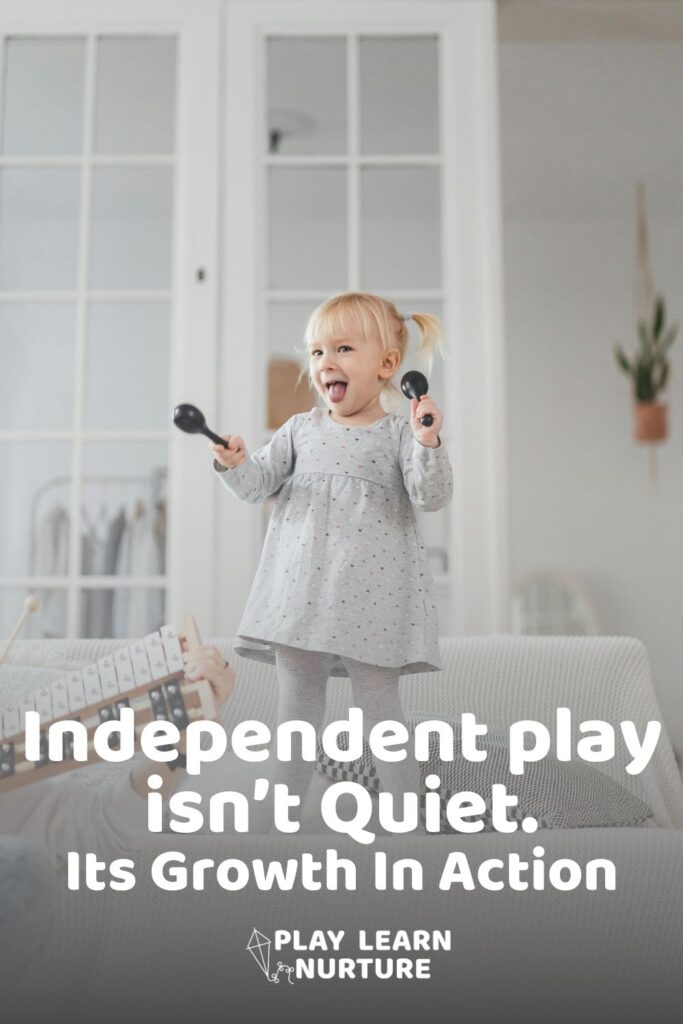
Not all solo play is created equal — and knowing what to expect from independent play by age can take so much pressure off. Here’s what’s realistic, what works, and how to support it — year by year.
What to Expect:
Attention span: 1 to 5 minutes (yep, that’s it!)
They’ll play near you, not away from you
Big focus on sensory exploration, mouthing, banging, dumping
What Independent Play by age 1 Looks Like:
Stacking + knocking over
Putting toys in/out of containers
Exploring textures like water, sand, soft fabrics
Crawling around with a spoon like it’s a magic wand
How to Support It:
Sit nearby and don’t interrupt
Offer a small selection of safe, open ended toys
Celebrate tiny wins (“You played for 2 minutes on your own!”)
Toy Ideas:
Ring stackers > Grab yours from Amazon here
Soft blocks > Grab yours from Amazon here
Push-and-go cars > Grab yours from Amazon here
Large loose parts like wooden rings or silicone cups
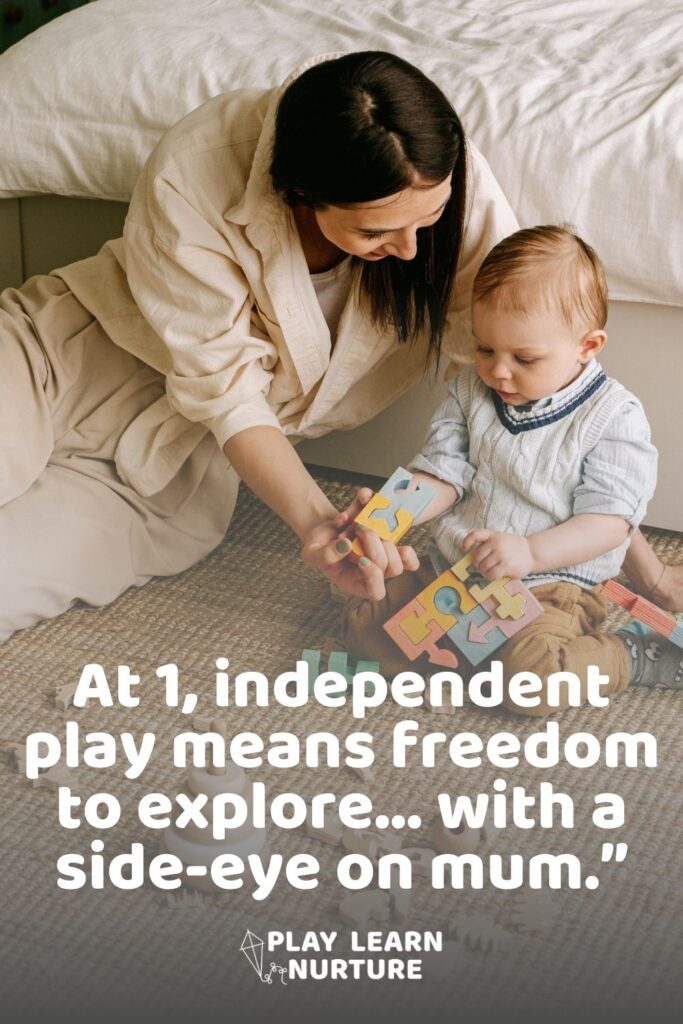
What to Expect:
Attention span: 4 to 10 minutes
Messy, repetitive, and often LOUD
Pretend play is just starting — think “feed baby” or “zoom car”
What Independent Play By Age 2 Looks Like:
Dumping and refilling bins
Talking to themselves or toys
Mixing pretend with real (“my cup has juice!” when it’s empty)
Copying your routines (pretend sweeping, cooking, etc.)
How to Support It:
Use the “you play, I’m close” strategy
Offer a play corner that feels like their space
Don’t worry if they narrate everything (that’s play too)
Toy Ideas:
Dolls + soft animals
Cars + ramps
Simple musical instruments
Bowls and spoons for pretend cooking
Blocks and magnetic tiles
Related blog: Coming Soon – [Loose Parts Play Ideas for Big Imaginations]
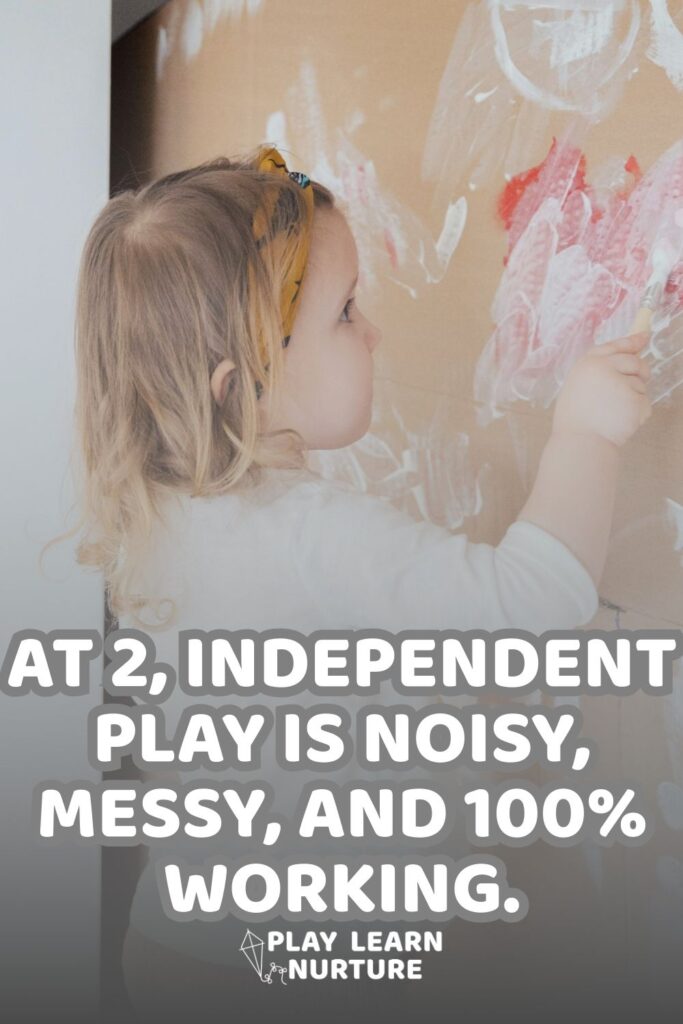
What to Expect:
Attention span: 10 to 20 minutes
More storytelling + imaginary scenes
You’ll hear them assigning roles: “I’m the dragon!” “This is the baby!”
What Independent Play By Age 3 Looks Like:
Constructing buildings or story setups
Acting out scenes with toys or costumes
Mixing open ended items into “plots” (tiles = zoo = truck road = magic bridge)
How to Support It:
Keep rotating open ended materials
Let them repeat the same scene over and over (it’s how they process)
Ask one open-ended question, then zip it
Toy Ideas:
Magnetic tiles
Dress ups + hats
Toy animals + mini figures
Cardboard boxes (always)
Toy kitchen or shop setup

What to Expect:
Attention span: 20 to 30+ minutes
Big interest in projects, patterns, and storytelling
They might prefer solo play now — welcome to the magic window
What Independent Play By Age 4 Looks Like:
Drawing, sorting, storytelling, rule-making
Creating “shops” or “hospitals” with full setups
Testing ideas (“What if I built the tallest tower ever?”)
How to Support It:
Offer more tools than toys — paper, clips, fabric, tape
Be nearby but let them lead
Encourage challenge play (build something taller, faster, longer)
Toy Ideas:
Open-ended art supplies
DIY stations (stickers, hole punchers, scissors)
Puzzle games or memory cards
Figurines + role play sets
Related blog: Coming soon – [Minimalist Toy Guide: Essentials for Open Ended Play]
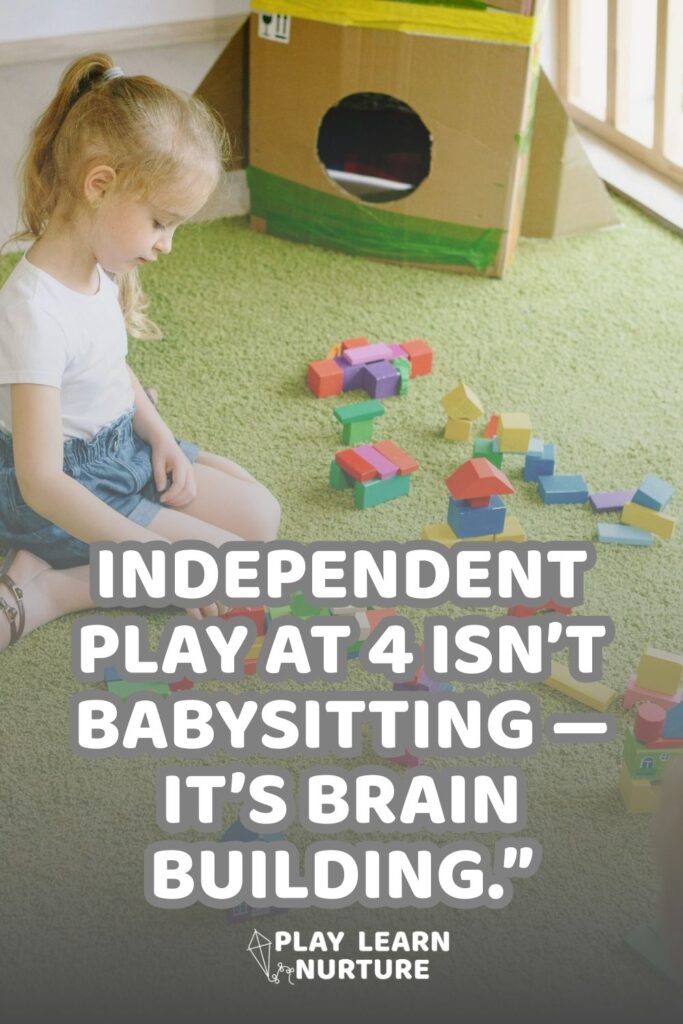
What to Expect:
Attention span: 30 to 45+ minutes
Long plots, rule-heavy games, quiet focus
They’ll start managing their own time and making up goals
What Independent Play by Age 5 Looks Like:
Building, narrating, documenting, inventing
Combining toys into complex scenes
Testing limits (“I bet I can build a bridge that holds my doll!”)
How to Support It:
Give space + open-ended prompts like “What could you build today?”
Introduce timers if they like structure
Follow up with “Tell me what you made!” instead of “Did you finish it?”
Toy Ideas:
STEM building sets
Lego kits (but let them freestyle)
Cardboard, clips, glue, and string
Puppets, playdough with accessories, story cubes
Related blog: The Incredible Benefits of Open Ended Play for Toddlers (Backed by Science + Real Life)
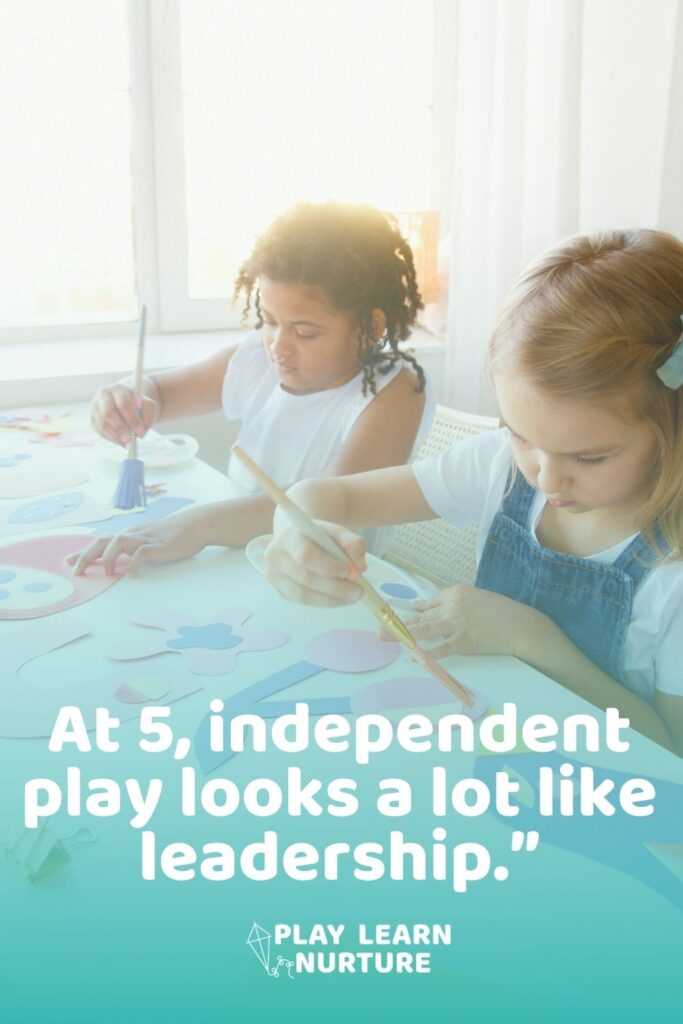
If you’ve Googled “Why won’t my toddler play independently?” you’re not alone — and you’re not failing.
It’s totally normal for toddlers (and even 4–5 year olds!) to cling during certain phases. Independent play by age isn’t a checklist — it’s a fluctuating skill.
Some reasons your child might resist solo play:
Separation anxiety spikes (even if they were doing great)
Illness, teething, or tiredness
Overwhelm from too many toys or choices
Lack of rhythm or predictability in the day
They just need more connection that day — and that’s okay
✅ “Play Near Me” Setup:
Set them up close by while you do your thing. “You play at this mat while I make coffee.” No pressure for quiet or long engagement — just parallel energy.
✅ “Your Job, My Job” Strategy:
“You build a tower while I fold this pile.” Link it to a time block and give them ownership of their play “task.”
✅ Tiny Wins Tracker:
Start a note in your phone: each time they play alone for 1, 3, 5 minutes — log it. You’ll be amazed at how it grows over a week.
✅ Name It Together:
Instead of calling it “independent play,” say:
“This is your idea time.”
“This is your build-and-create time.”
“This is your superpower thinking time.”
Real Talk: Clingy ≠ Broken
Needing connection isn’t a flaw. It just means your child’s feeling unsure and looking for reassurance.
Instead of forcing separation, try this gentle shift…
Sit on the floor with your child, but don’t direct the play. Let them lead. Over time, scoot further away — couch, doorway, kitchen — while still being “there.”
Related blog: How to Start Independent Play and Finally Enjoy 5 Minutes of Peace
Kids love knowing what to expect. Try saying, “I’ll set the timer for 5 minutes. You play, and when it dings, I’ll come join you!” Then slowly build from there.
Try:
“You’re safe, and I’ll be right here.”
“I love how you’re playing on your own — that’s your brain getting stronger!”
“I’ll be folding laundry, and I’ll come see what you’re doing in a bit.”
Build in a dedicated solo play time every day — even if it’s short. Predictability builds trust, which builds confidence.
Focus on the process:
“You played by yourself for five whole minutes — wow!”
“That idea was all yours!”
This reinforces their ability, not the product.
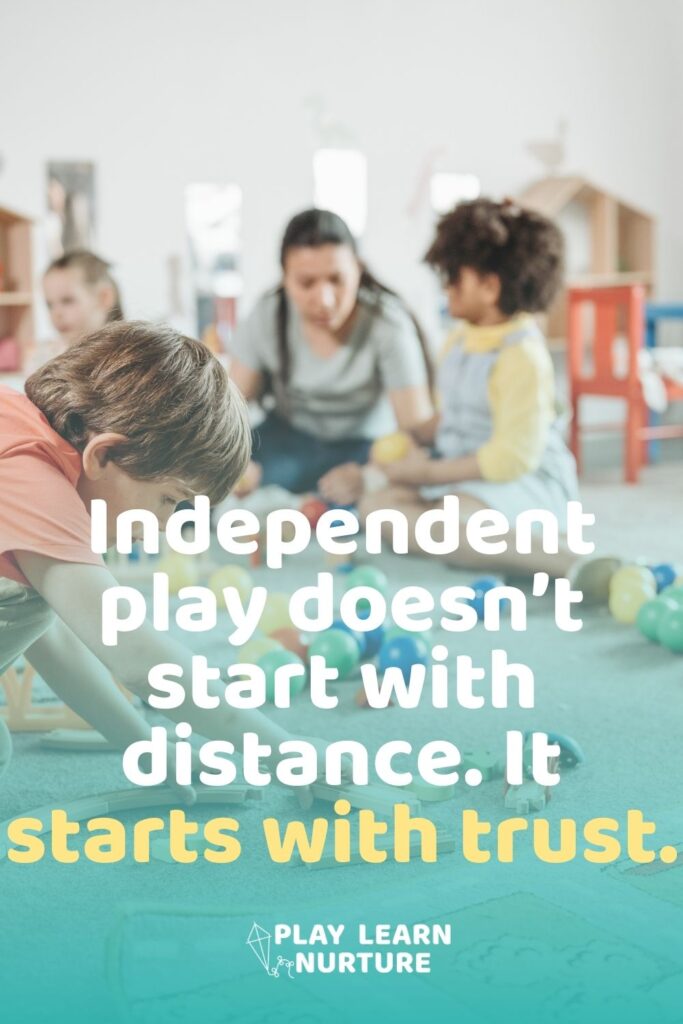
Every age brings different strengths and challenges when it comes to solo play — which means your support should shift too. These simple, real-mum strategies help build independent play without adding 10 things to your to-do list.
Use a “yes space” where they can explore safely without constant interruption
Offer just a few toys at once to avoid overstimulation
Narrate occasionally, then go quiet to give space
Let them see you nearby folding laundry or reading
Independent play by age 1 isn’t about silence — it’s about safe exploration.
Use open ended toys they already love (dump, sort, repeat!)
Set up predictable routines like “play corner after snack”
Let them repeat the same activity for days — that’s how they master it
Praise effort: “You played while I was making tea — great job!”
Start play with them, then fade into the background
Ask questions like, “What will happen next in your story?” then let them run
Create flexible play prompts: “Can you make a zoo with these blocks?”
Use timers to build solo time slowly
Keep creative tools within reach: paper, scissors, stickers, tape
Let them “set up” their own play station
Avoid micromanaging the mess (as long as it’s safe)
Ask for a “tour” of their world once they’re done
Set play goals together: “Can you build a road that connects two rooms?”
Encourage longer projects — cardboard cities, book-making, puppet shows
Give them chunks of time (20–40 mins) with check-ins
Celebrate consistency, not perfection
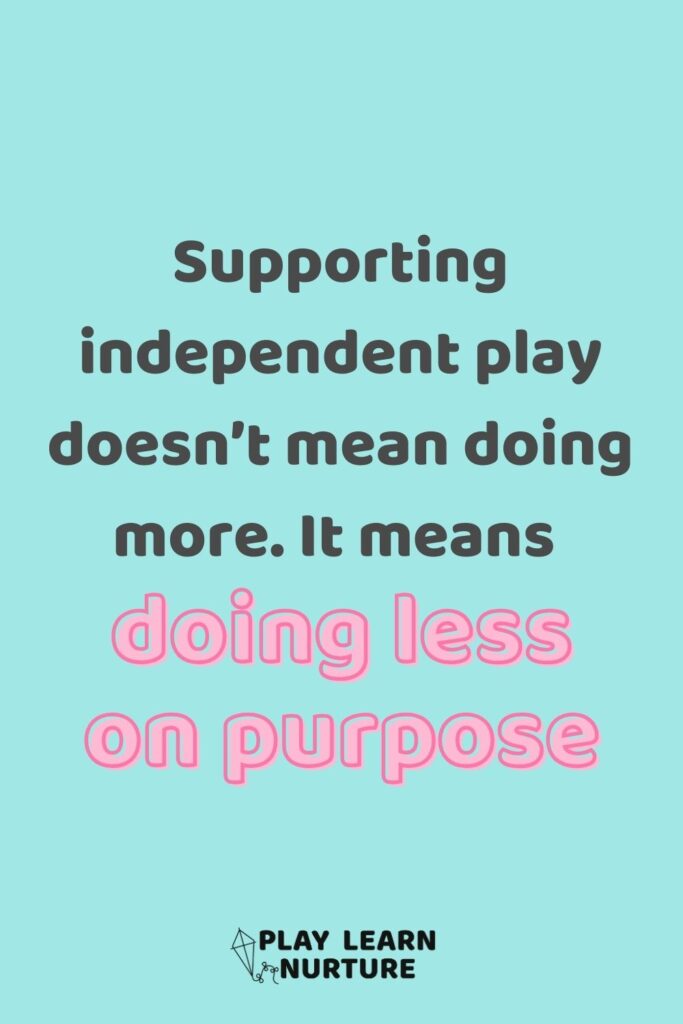
A good play space doesn’t need to be Pinterest-perfect. It just needs to be toddler-friendly, safe, and set up to support independent play by age.
Baby-safe, enclosed area with soft flooring
One or two simple toys within reach
Room to crawl, cruise, and explore safely
Open bins for dumping and sorting
Low shelves with 3–4 toys visible
Safe access to pretend play items (kitchen sets, dolls, cars)
Defined zones (blocks, animals, art, pretend)
More space for setups — boxes, ramps, blankets
Flexible layout toddlers can “remix”
Include vertical surfaces (chalkboard, easel, whiteboard)
Open-ended materials: tape, stickers, scissors, recycled items
Their own table or mat to “own” their play
Add a creation station or mini workshop
Include building kits, craft trays, dramatic play boxes
Time timers or visual schedules to support longer focus
Pro tip: Rotate 3–6 toys weekly, and always keep one “comfort toy” visible to increase engagement.
Independent play doesn’t always look productive — but tiny wins are happening.
Look for these subtle signs that your child’s independent play by age is on track:
They go back to the same toy or setup again and again
They pause, think, and try again without asking for help
They narrate or talk through what they’re doing
They combine toys in new ways
They don’t ask for help right away
They start referencing their solo play during stories or meals
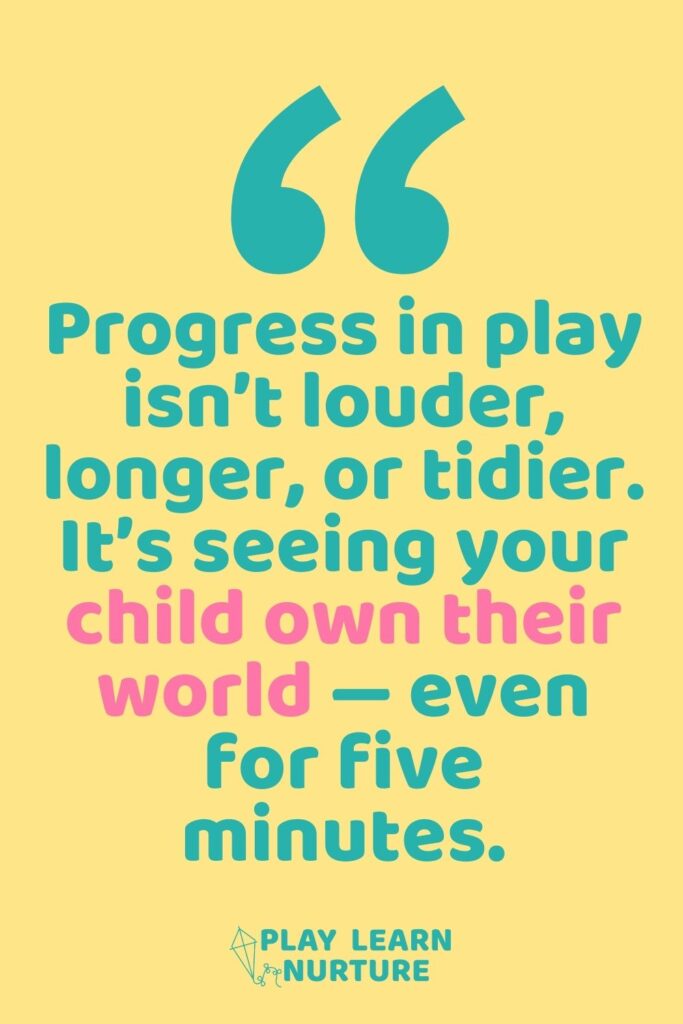
Sometimes, parents worry their child should be playing alone more by now. Here’s a gentle breakdown.
Your toddler plays solo for short bursts but needs frequent check-ins
They want you nearby but don’t demand constant interaction
They repeat the same game or storyline daily
They resist change but engage when familiar setups are offered
Your 3+ year old never engages in solo play, even briefly
They show no interest in toys or pretend play at all
They panic when separated, even by a few steps, consistently
Their solo play is extremely rigid, repetitive, or absent of imagination
Every child is unique. Most kids improve their solo play with gentle structure, patience, and time — not pressure.
It depends on their age (and their mood). Here’s a quick guide to independent play by age:
1 year old: 1–5 minutes
2 years old: 4–10 minutes
3 years old: 10–20 minutes
4 years old: 20–30+ minutes
5 years old: 30–45 minutes or more
These are averages — every child is different, and play ebbs and flows.
Look for open ended toys your child can use in lots of different ways:
1–2 years: stacking cups, blocks, push-pull toys
3–4 years: magnetic tiles, pretend play sets, playdough
5 years: building kits, story cubes, craft supplies
The goal is flexibility — not flashy features.
Read More: Best Open Ended Toys For Toddlers by Age (1–5 Years)
Start with proximity play. Sit close while they play and gradually create more distance. Praise every tiny moment of solo play and make it part of your routine.
Read More: How to Start Independent Play and Finally Enjoy 5 Minutes of Peace
Yes! Narration is totally normal (and great for language development). Independent play by age isn’t defined by silence — it’s defined by the child leading the play.
When they begin to initiate their own playtime, return to familiar activities, or invent games with toys — those are signs they’re ready for longer, deeper independent play sessions.
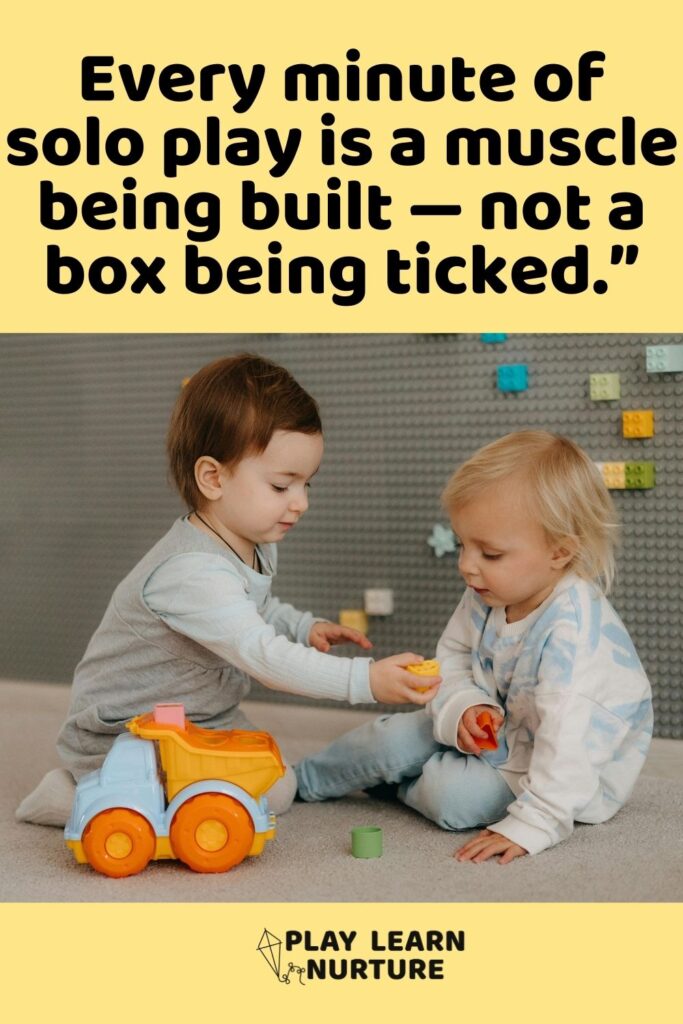
Let’s ditch the guilt and the Pinterest pressure — independent play by age isn’t something your child “should” be nailing. It’s something they grow into.
Some days, it’ll look like quiet creativity. Other days, it’s a whirlwind of blocks, noise, and you being asked “Mum, are you watching?” every 30 seconds.
Celebrate the shifts:
The moment they play for 3 minutes while you drink warm coffee
The first time they stay in their room and finish the tower
The proud “Look what I made!” after a big solo project
That’s the good stuff. That’s the progress.
And the more space you create for solo play — the stronger their creativity, confidence, and focus will grow. Not overnight, but over time.
How to Start Independent Play and Finally Enjoy 5 Minutes of Peace
The Incredible Benefits of Open Ended Play for Toddlers (Backed by Science + Real Life)
Less Chaos, More Calm — Why a Yes Space for Toddlers Just Works
Coming Soon – [Daily Independent Play Routine That Builds Focus and Confidence]
Coming Soon – [Minimalist Toy Guide: Essentials for Open Ended Play]
Coming Soon – [Loose Parts Play Ideas for Big Imaginations]
Coming Soon – [What to Do When Your Toddler Won’t Play Alone]
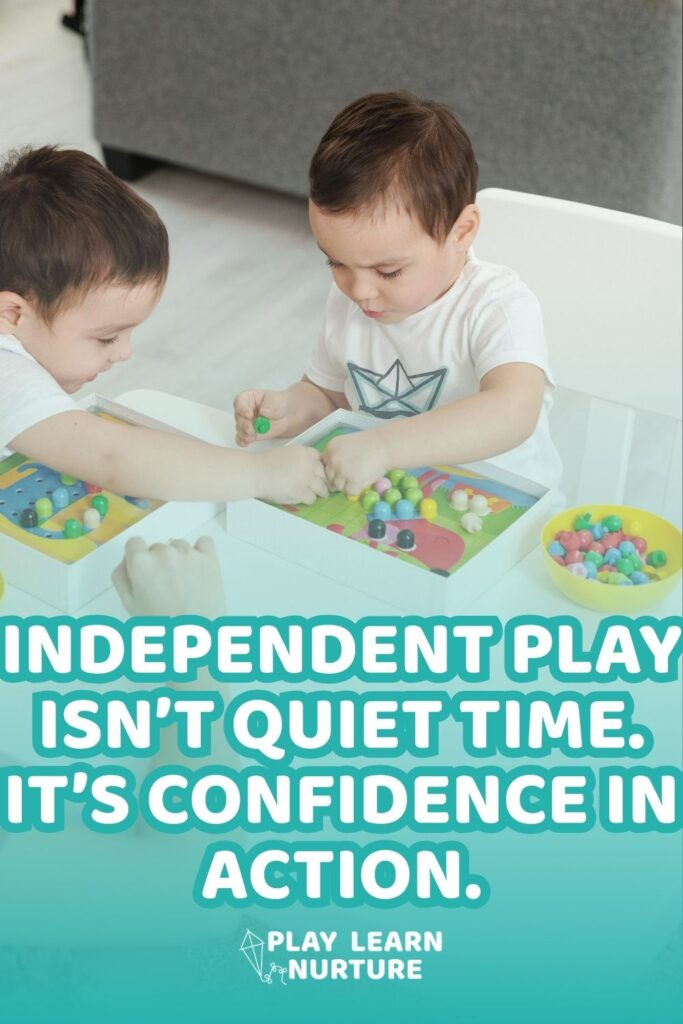

From magnetic tiles to dolls and pretend kitchens, these 15 toddler toys are actually worth the shelf space — and designed to encourage solo play and confidence.

Delve into the world of loose parts play with our selection of toys that inspire exploration and innovation. Perfect for enhancing your toddler’s sensory and cognitive skills.

Simple, real-life play space ideas for toddlers that spark imagination, support independence, and give you a moment to breathe — no Pinterest-perfect setup required.